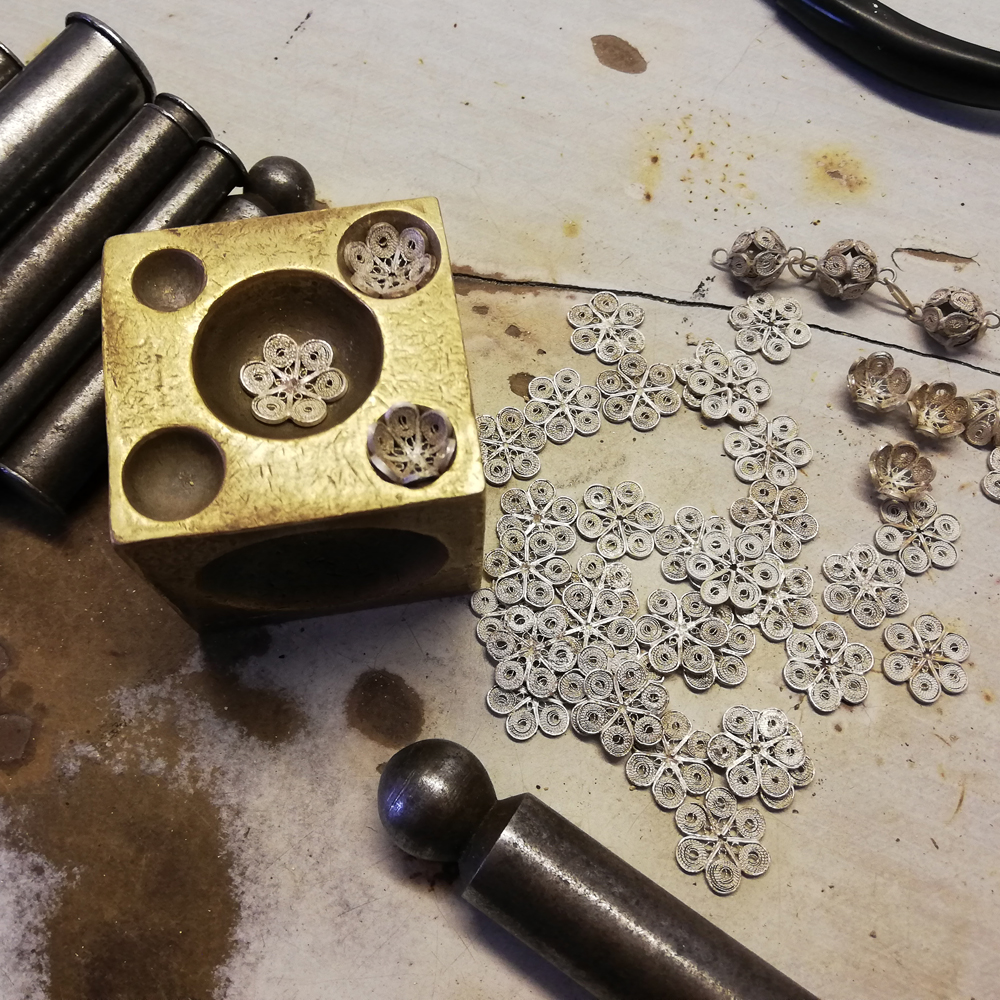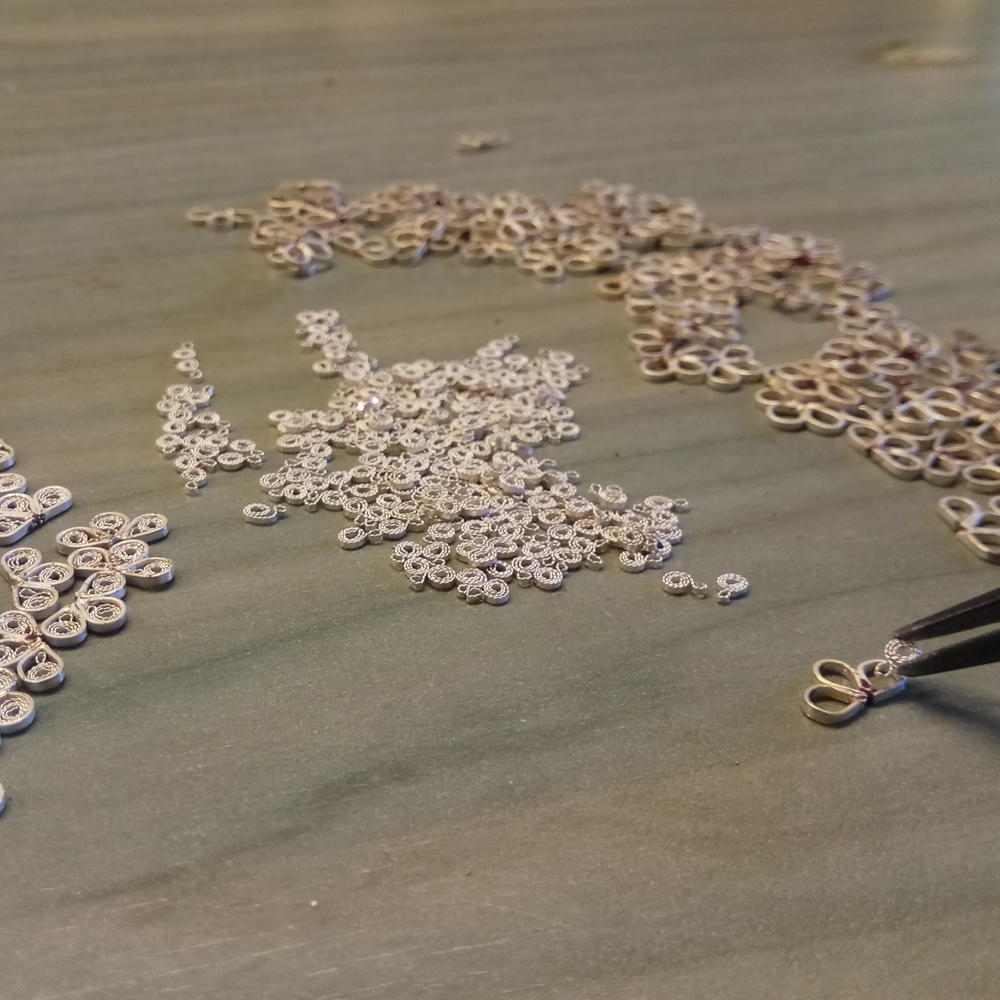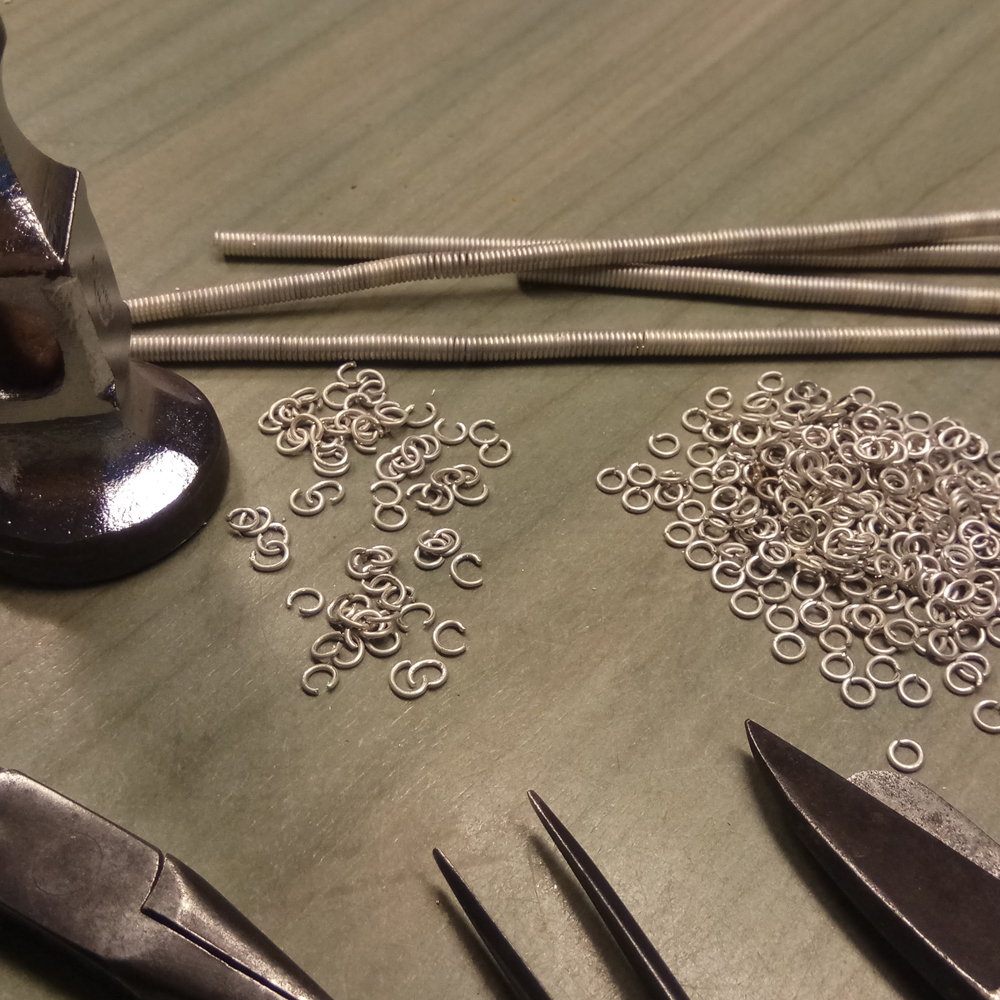Filigree is a form of ornamental latticework, characterized by intricate wire designs crafted with exceptional skill and precision. In Malta, filigree-making is a long-standing artisanal tradition, and the existence of Maltese terminology—such as vultar and rizzol—reflects its deep cultural roots.
Structure of Filigree Work
Traditional filigree work typically consists of two main components:
-
Border Wire (vultar)
This is a flattened, single-stranded wire that is carefully shaped into the desired frame. It forms the outer structure and serves to contain and support the inner design. This component is a hallmark of the craftsmanship passed down through generations of Maltese artisans. -
Filling Wire (rizzol)
Made from two twisted strands, the rizzol is then flattened and intricately arranged within the vultar frame. It creates the delicate internal patterns that define the beauty of filigree work.
Traditional Designs and Motifs
Maltese filigree commonly features motifs inspired by the island’s history and culture. The most popular traditional designs include:
-
The Maltese Cross
-
The Maltese boat (dgħajsa)
-
Various historical and religious symbols
Additionally, handcrafted filigree often incorporates:
-
Geometric patterns
-
Rosettes
-
Floral motifs
-
Animal figures, especially butterflies and birds
Larger decorative items such as trays, dishes, figures, and model structures are also crafted using this traditional technique.
Source: “Traditional Hand-Made Maltese Filigree: General Characteristics and Identification Parameters,” Malta Standards Authority, 2003.




